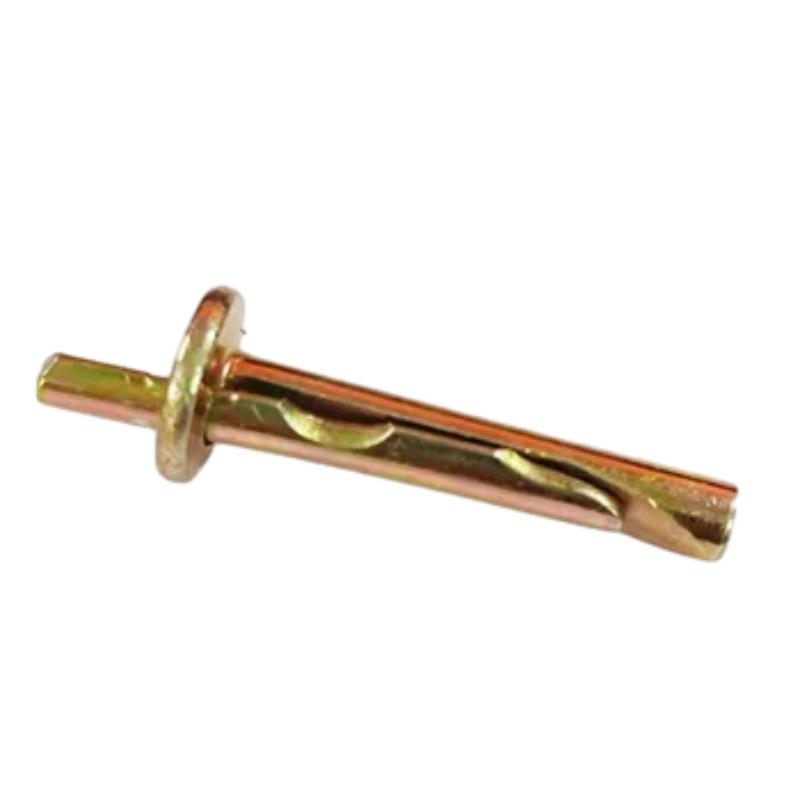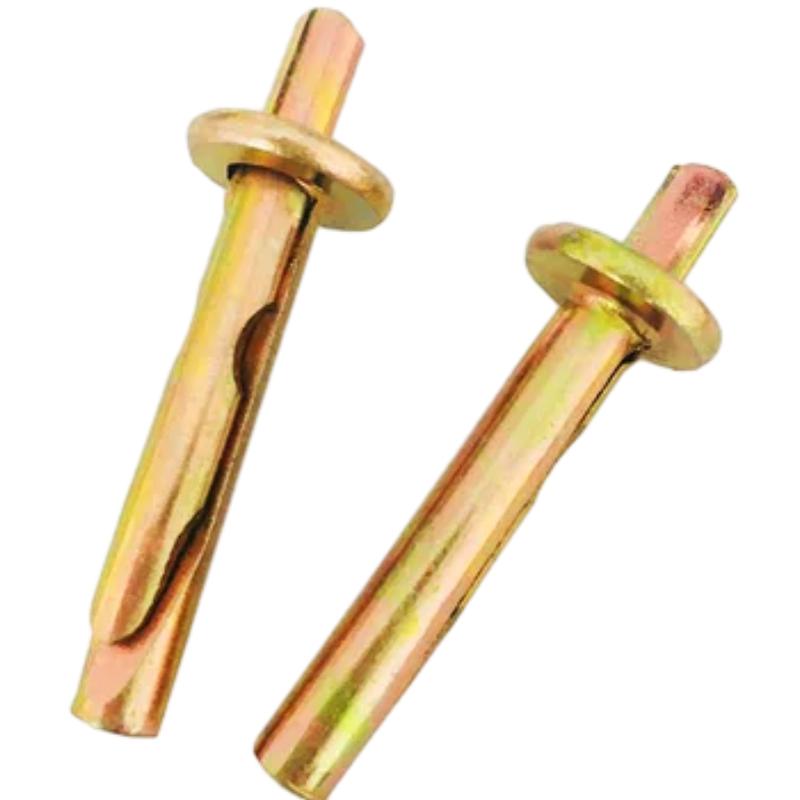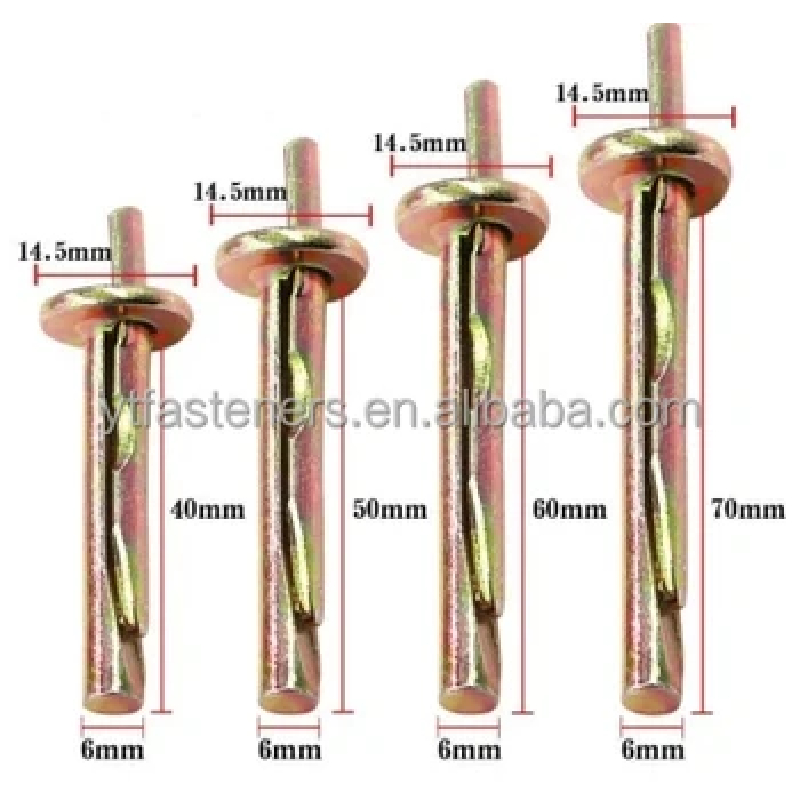Jul . 21, 2025 11:01 Back to list
High-Strength Chemical Anchor Bolts for Ceiling & Concrete Mounting
Introduction to Chemical Anchor Bolt Technology
The construction industry is witnessing a revolution in anchoring technology, and at the forefront are chemical anchor bolts. These specialized fasteners have transformed how structural elements are secured to concrete and masonry substrates. Unlike mechanical anchors that rely on friction, chemical bolt anchors utilize a chemical adhesive that penetrates the substrate's pores, creating molecular bonds stronger than concrete itself.
Market research indicates 18% annual growth in the chemical anchoring segment, driven by infrastructure development and strict building safety regulations globally (Construction Materials Journal, 2023). Chemical bolt systems offer superior performance in both cracked and non-cracked concrete applications, making them indispensable in seismic zones where structural integrity is paramount.



Technical Specifications & Performance Data
Chemical Anchor Bolt Yellow Zinc Plated Carbon Steel ceiling Anchor
Our flagship product provides exceptional solutions for heavy ceiling installations. Key features include:
- Material: High-grade carbon steel with yellow zinc plating
- Installation: Hammer-activated impact expansion
- Applications: Cracked and non-cracked concrete
- Installation benefits: No specialized setting tools required
- Capacity: Adjustable tension based on embedment depth
- Also known as: Through bolts, expansion bolts, expansion anchors
Chemical Anchor Bolt Technical Parameters
| Parameter | Value Range | Test Standard | Performance |
|---|---|---|---|
| Diameter Range | 6mm - 24mm | ISO 898-1 | Wide applicability |
| Tensile Strength | 24kN - 120kN | ETAG 001 | Heavy duty capacity |
| Shear Strength | 18kN - 85kN | ASTM E488 | Seismic performance |
| Embedment Depth | 40mm - 200mm | ACI 318 | Adjustable strength |
| Temperature Range | -40°C to +80°C | ISO 9142 | All-climate |
| Cracked Concrete Tolerance | Up to 0.3mm | ETAG 001 Annex C | Structural safety |
Data Visualization: Industry Trends
Industrial Applications of Chemical Anchor Bolts
Ceiling anchors represent the most common application for these anchoring systems, especially in commercial construction:
Suspended Ceiling Installations
In modern office buildings and commercial spaces, our ceiling anchor bolts provide the optimal solution for securing suspension wires. They offer:
- Instant load-bearing capacity after installation
- Vibration resistance for seismic zones
- Simplified installation without specialized tools
- Adjustable tension control through embedment depth
Heavy Industrial Applications
For heavy duty ceiling anchors used in manufacturing facilities and warehouses:
- Mechanical conveyor systems
- HVAC ductwork suspension
- Overhead crane track supports
- Pipe suspension systems
According to Industrial Engineering Journal (2023), chemical bolt systems provide 37% higher safety margins compared to mechanical anchors in high-vibration environments.
Professional FAQ: Chemical Anchor Bolt Solutions
Innovation & Future Trends
Industry innovations are shaping the next generation of chemical anchor bolt technology:
Smart Anchoring Systems
Sensors embedded in ceiling anchor bolts can now monitor structural loads in real-time, transmitting data to building management systems. This innovation provides:
- Continuous structural health monitoring
- Early detection of stress anomalies
- Predictive maintenance capabilities
- Integration with BIM systems
Sustainable Solutions
Eco-friendly adhesive formulations are reducing environmental impact. New bio-based polymers:
- Contain 30% reduced VOC emissions
- Utilize recycled materials in packaging
- Offer lower carbon footprint manufacturing
- Maintain performance with faster curing times
Construction Technology Review (2023) notes that these innovations are driving a 25% annual market growth for advanced chemical bolt anchor systems in sustainable construction projects.
Technical References & Industry Research
- Building Anchorage Standards - ICC Evaluation Service: https://www.icc-es.org/criteria
- Structural Adhesive Anchoring Systems - American Concrete Institute Report: https://www.concrete.org/publications
- Seismic Performance of Anchorage Systems - Journal of Structural Engineering: https://ascelibrary.org/journal/jsendh
- European Technical Approvals for Chemical Anchors - EOTA: https://www.eota.eu
- Anchor Bolt Installation Best Practices - Construction Industry Institute: https://www.construction-institute.org
- Corrosion Protection Standards - ASTM International: https://www.astm.org/standard/b633.html


